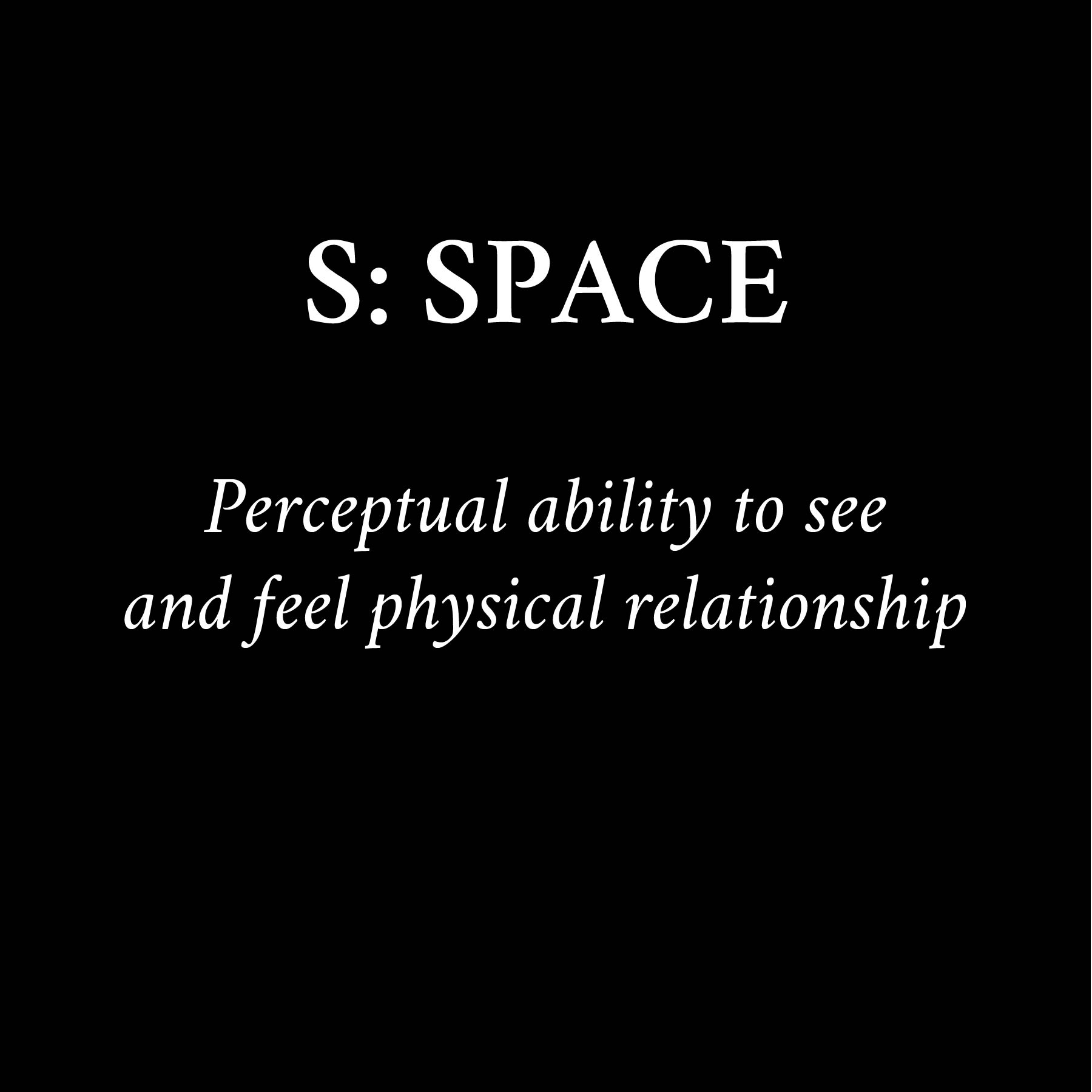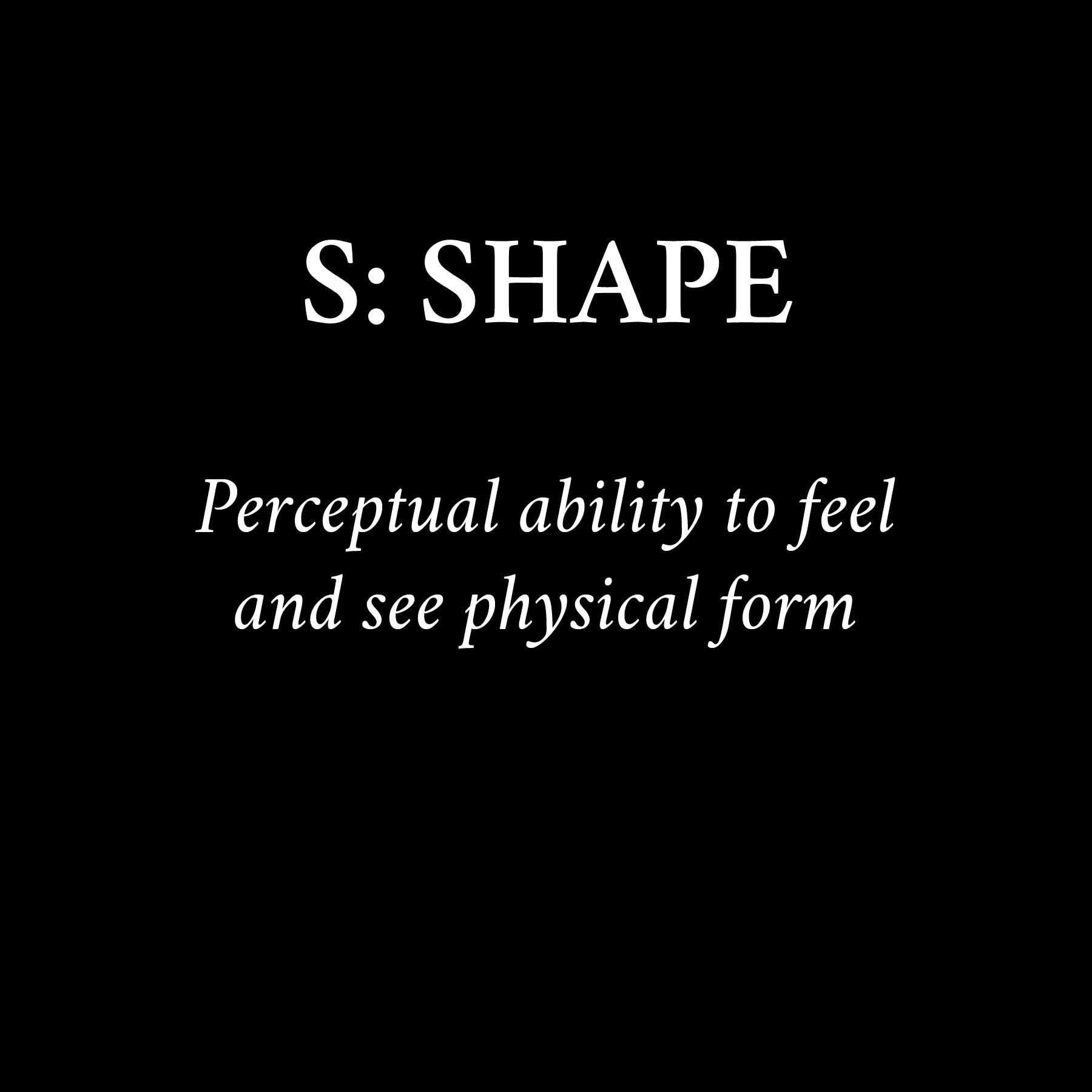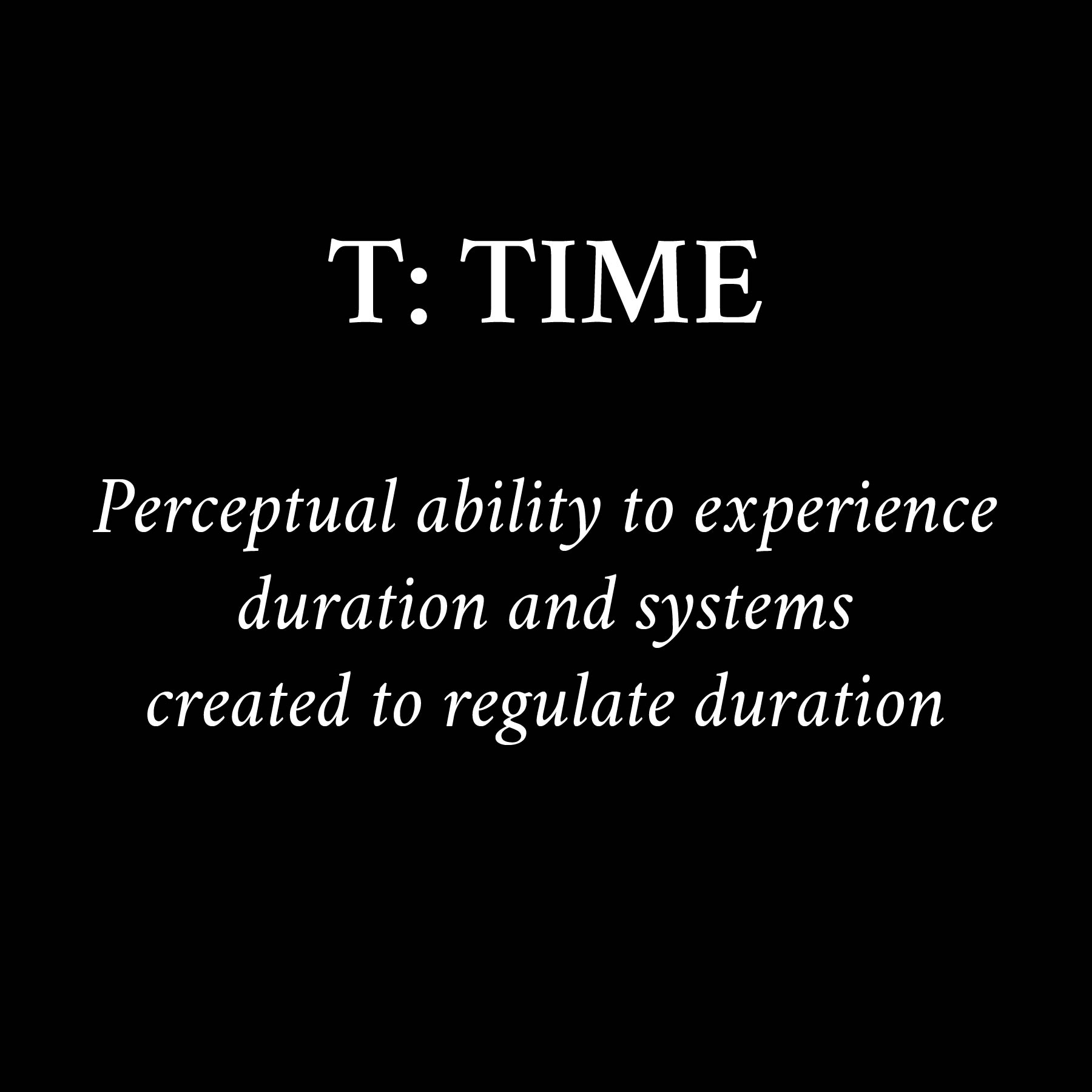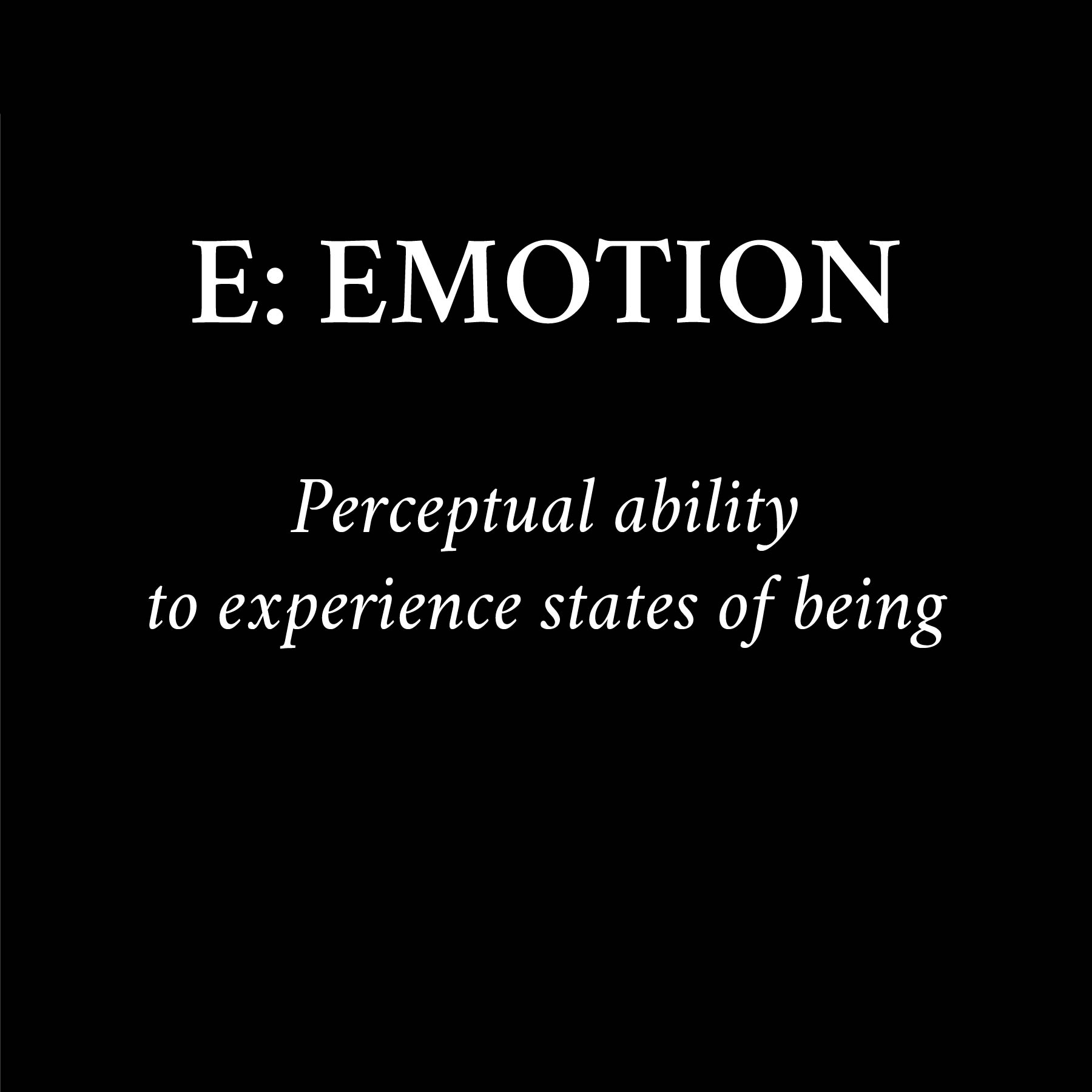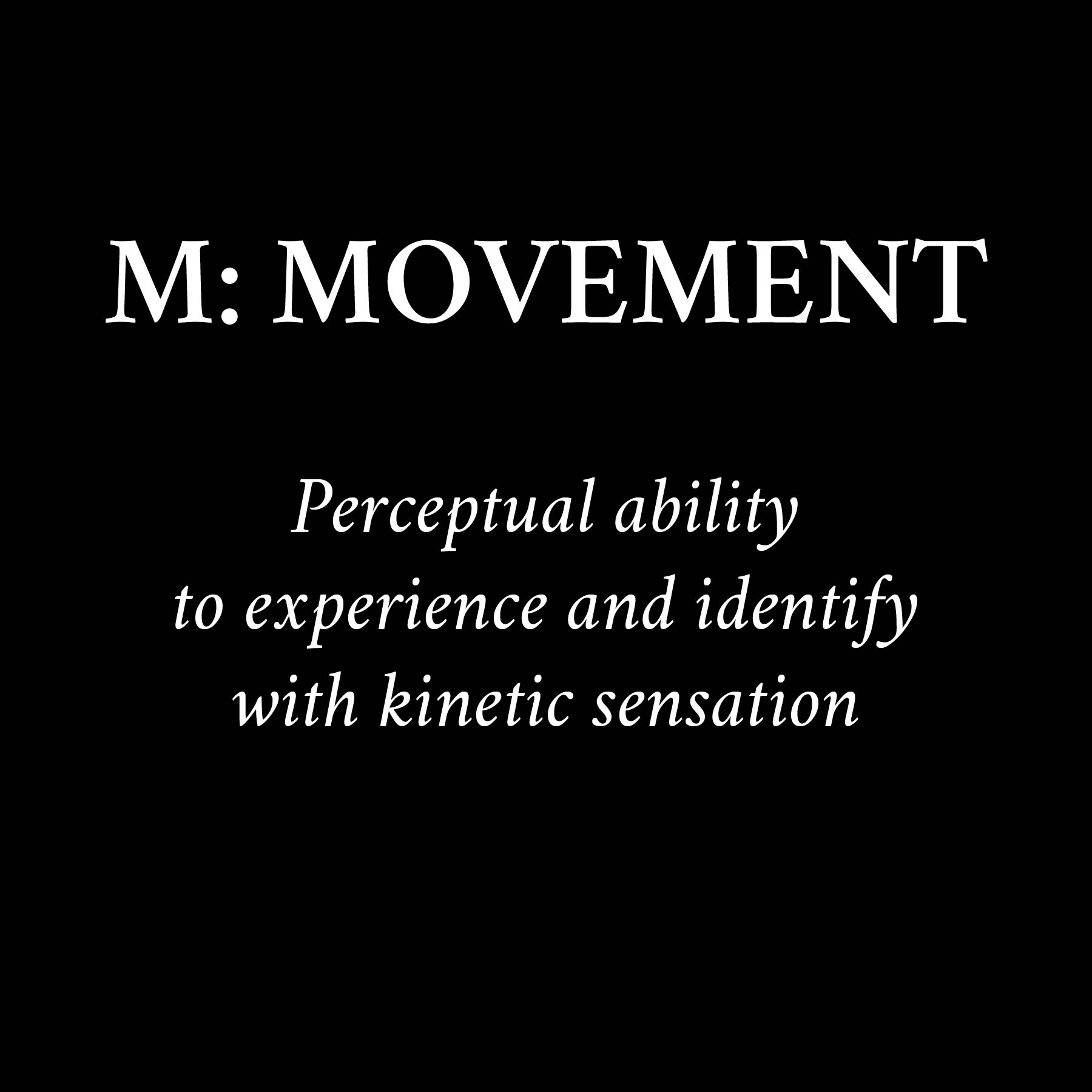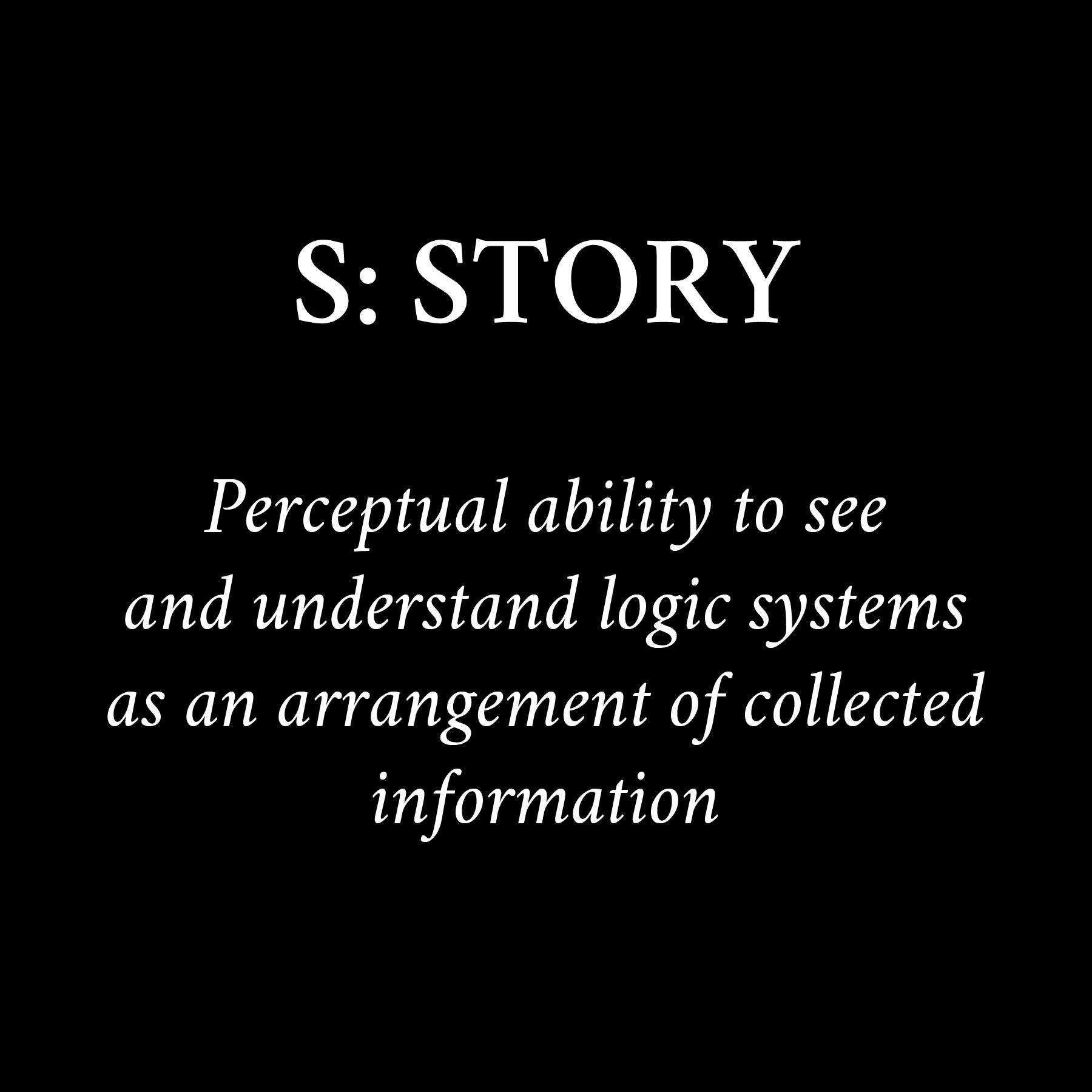the six viewpoints
Mary Overlie, 2016
the sstems
The seed of the entire work of The Six Viewpoints is found in the simple act of standing in space. From this perspective the artist is invited to read and be educated by the lexicon of daily experience. The information of space, the experience of time, the familiarity of shapes, the qualities and rules of kinetics in movement, the ways of logics, that stories are formed and the states of being and emotional exchanges that constitute the process of communication between living creature. These are the six materials named in The Six Viewpoints that constitute basic deconstructed theater. Working directly with these materials the artist begins to learn of performance through the essential languages as an independent intelligence.
These materials or perceptual languages can be listed in any sequence. You see them listed below as an anagram, SSTEMS, as in stems or a strange way to spell systems.
In order to study The Six Viewpoints it is necessary to release traditional concepts of theater. This process is not as drastic as it sounds. It does not mean letting go of history, it simply means adding a change of perspective. The experience of entering The Six Viewpoints is entirely different from traditional theater training. Instead of beginning with the idea of making theater this approach begins with taking theater apart. To accomplish this task it is necessary to be practiced at deconstruction or separating the whole into its essential parts. The whole is broken down into its basic materials and their languages. This activity has to be done with great care and respect for the whole. It is essential to know where the seams lay so separating can be done with clarity otherwise the materials and their languages may be ruined making it impossible to deal with them in their integrity. It is like taking a shirt apart at the seams as opposed to simply cutting it into arbitrary section. When the material of space is located with clarity the artist can begin a dialogue with its languages discovering how to observe and participate with space.
Over the years of investigation a grounded articulation of these materials the philosophy of postmodernism has emerged along with many startling perspectives and revelations on: the nature of communication; the nature of learning, the nature of social structure, the nature of discourse, and the nature of negotiation. Interaction with these substantive issues joins this theory into a discourse on society and existence, fulfilling, as a true artistic theory should an accountability of its vision.
This work does not have a pre-existing idea of what theater is, how it should be created, what it should say or how it should say it. In entering this work the artist finds that they take possession of the stage and are anchored in its realities free of the opinions of others about how to make theater. In this undertaking the artist is challenged to develop self-guidance, the discipline of keeping focused and the ability to have perspective. To accomplish this requires a type of physical training that focuses on the body in great detail. This requires educating the mind and body to its function. Underlying training such as Alexander work, body Mind Centering, Contact Improvisation, Allen Wayne work, Hamilton Floor work educates the instrument in depth without culturing patterns of movement. This type of approach is essential in that it develops availability to sense rather than to produce.
The simplicity of The Six Viewpoints is based on one on one contact with the basic materials. This approach aligns itself with the eastern practices that rely on the student to find their own truth as part of the understanding encompassing all of life. In this work there is no teacher, no authority to pronounce achievement or failure beyond understanding that any part is a part of the whole.
The implications of this event called The Six Viewpoints, the strict and unique discipline it requires, the philosophical system that it creates, the humility and strength it imparts, the wisdom it councils, the openness it engenders, the negotiation it facilitates in its attitude, the equality it teaches, the joy of joining a greater whole, the profound relief that you are not required to choose but are invited to participate, the promise and knowledge that you are contributing just by being there in the dialogue have made it clear to many people why one would want to know this perspective on theater.
THE PROJECT
THE BEGINNING OF THE THEORY
The project of the Six Viewpoints was formulated in the landscape of Montana. In this environment distance has a physical impact on the body. The combination of high prairie and mountains inundate you with a sense of space and perspective. Man made structures appear to be nothing more than arbitrary thoughts that change in the sweep of time. The voice of this land counsels you to learn to use perspective as a tool and to cut deeply into what concerns you. This is the point of view of The Viewpoints.
In Montana the light seems to come from under your feet. Space becomes a primary language for the mind. Much work has been done on The Viewpoints site over the years but the voice of perspective has never been altered.
Early tutors, my parents Olav and Elaine and my art parents Gennie and Bob DeWeese, taught me the joys of investigating what was around me, to be interested in my own experiences, to use my own logic, to take responsibility for my ideas and to find a language to communicate them to others.
I was given the concept that you can sue your mind to move and change definitions but it is necessary to ground these thoughts in physical reality. I was taught to use the concepts of systems and logic, not as a set of rules, but to create a fluid dialogue. I learned to respect, rather than to fear deconstruction. This lesson is now articulated again and again in the Six Viewpoints process as a primary tool for creativity. I came to believe that to be a participant in the future you need to discover the discipline of separating the mechanics of the universe. Through these lessons I began to understand that copying was not necessary, not desirable and actually not possible.
To most people's surprise there is a great deal of art in Montana. I had the privilege of coming in contact with a large and varied group of artists. While most of the other children were out playing I would hang around on the backs of chairs listening to conversations among artists delving into the endless investigation of form and freedom. I came to understand that communication occupies a vital position in art. For artists, formulating languages facilitates a dialogue that connects their efforts.
I witnessed each of my tutors stand times in a special place in the world, having to fight for the freedom to hold an open view on life. I watched them work very hard to maintain credibility in a society that did not feel comfortable with people creating their own ideas. My tutors taught me that real strength is built out of the flexibility of an open mind, the courage to be fluid in accepting experiences and ideas and the discipline of self critical thinking to strive for clarity. These open views formed a central structure in my life and continue to inform the manner in which I teach The Six Viewpoints.
These early influences allowed me to conceive of the idea that theater had a basic working language and that I could find it if I kept looking. Eventually I hound The Six Viewpoints. The Viewpoints process reduces performance to a code. This code acts like a flexible measuring devise much like a transit and rod used in surveying for mapping land. The Viewpoints, like the transit and rod were devised to reveal structure. The structure. The structure we see through The Viewpoints is made in six basic windows of perception that are used to create and view theater.
THE OBSERVER/PARTICIPANT
THE RESULT OF THE THEORY
The practices of Six Viewpoints turn the concept of creativity inside out. The traditional definition and training of the artist as a creator/originator is replaced with a training and definition of the artist as an observer/participant.
As the artist looks at the materials with ever increasing detail their languages begin at suggest and at times to direct and at other times to receive direction. The artist is not in exclusive control of the materials as is expected in traditional theater. The work and training of an observer/participant is to enter into a dialogue allowing the materials to become the teacher resulting in a radical change in the system of theater education.
Since The Six Viewpoints releases the materials from the domination hierarchical control exhibited over them by the creator/originator a dialogue can be set up with them in their own habitats and in their own languages. Experiencing space in its own context and learning to dialogue with its languages helps in reaching past habitual use of the material. The possibility of learning directly from materials that speak languages other than our own has powerful implications. It means we have more languages with which to communicate. It means that we can communicate more information on more topics with greater subtlety. It means that the training to be an observer/participant brings with it more openness to communicate. It also places the artist in a more joyful and reverent activity, one that is free from the demands to be in control and to be right at all the times.
I think that all of the artists I mention in the history of the Viewpoints are master observer/participants.
Take a look at their work if you agree with me.
HISTORICAL CONTEXT
INVENTING THE WHEEL BACKWARDS
When I was nine years old I developed a curiosity about the basic materials that constituted theater. With this question I began a long journey. That was in 1957, I was growing up in Montana and Merce Cunningham was working on his choreography in New York City. His path would eventually cross mine, opening my life to a river of artists and an ocean of information that has constituted my education and becomes the substance of the Six Viewpoints theory and practices. The first structure of this work became formalized in 1976 and taught publicly in 1978 in workshops and for the first time at The Experimental Theater Wing, Undergraduate Theater in Tisch School of the Arts at New York University where I continue in part to reside as a teacher. The work finally reached completion in April 2003 in a series of conversations that took place with professor of avant-garde theater, Branislav Jakovljevic. To my great shock and surprise and then instantaneous understanding the discovery of the final conceptual frame of The Six Viewpoints comes to form a circle that returns The Viewpoints to their origins in the wild freedom of the native growing up in Montana and the question, what is theater made of, that started this evolution.
I see The Six Viewpoints as a kind of structure erected on ground that inspired them to be built. "Inventing The Wheel Backwards" is my code name for the era that marks the assemblage phase of The Six Viewpoints. This era started for me when I came to New York to live with the artists who were looking at art from an entirely different perspective. Soho, January 1970. I joined them in "inventing the wheel backwards".
We worked our way back. We did not try to know what was known. We tried to un-know it. We lived in caves and watched as the beasts roamed around us. The caves were our minds and the beasts were the elements of form. We were reforming art into a democracy. We were studying phenomena. Formalism disappeared through the act of scrutiny and reappeared in a new position of equality. How we got to those caves with those beasts is a curious story that I am still working to understand but what is clear is that the commitment to bring others there is at the heart of this work.
- Mary Overlie 1989
Now I read this and think that the caves were also the huge cheap lofts that we heated with wood burning stoves.
I claim not to have invented this work but I do proclaim myself the originator of The Six Viewpoints. Much of the body of this work can be found articulated in the works of Robert Wilson, The Ontological hysterical Theater Company or Richard foremen, The Wooster Group, Mabou Mines Theater Company, The choreographies of Merce Cunningham, Trisha Brown, Yvonne Rainer, Steve Paxton, Barbara Dilley, the sculptures of Richard Serra, Richard Nonas, Keith Sonnier, Donald Judd, Gene Highstein, the music of Philip Glass, Ornette Coleman, to name just a few artists who work in areas close to this artistic philosophy. The people mentioned above have had profound influences on the formation of The Six Viewpoints as I dialogue with their work and sometimes worked for a few of them I was training my understanding of how to deconstruct and why. My contribution to this world has been to gather the material now called The Six Viewpoints and through this structure articulate the new perspective on art that they represent. In a beautiful dichotomy, to a great extent none of this is mine and because I have articulated it all of it is mine.
I encourage you to seek out the work of these artists if you are not already familiar with them.

